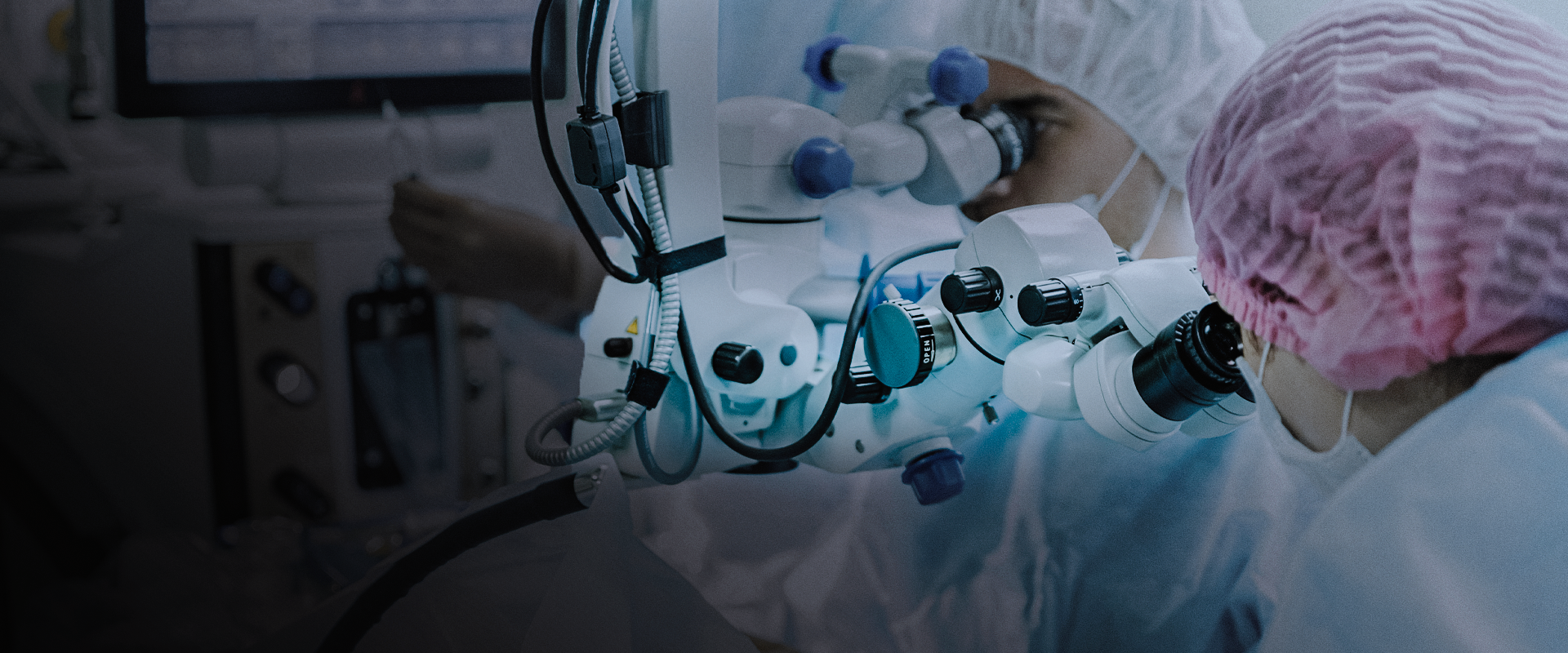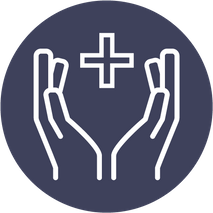
Rehab for Arthroscopic Procedures
AT EVOLVE
Rehab Physical Therapy for Arthroscopic Procedures
HOW CAN PHYSICAL THERAPY HELP ME RECOVER FROM ARTHROSCOPIC SURGERY?
Arthroscopic surgery is a type of less-invasive surgical procedure used to diagnose and treat many different types of orthopedic conditions. Physical therapists play an important role in rehabilitation from arthroscopic surgery and physical therapy is often recommended following surgery to help the patient recover fully. Physical therapy helps promote healing of the surgical area and return to full function through the use of manual therapy techniques, therapeutic exercises, neuromuscular re-education and more.
WHAT DOES PHYSICAL THERAPY FOLLOWING AN ARTHROSCOPIC SURGERY LOOK LIKE?
My team of physical therapists and I will help you recover from arthroscopic surgery. In the beginning your PT will work on reducing swelling in the affected area, teach you how to protect the area and initiate return of muscle function and range of motion in the area that underwent surgery. As recovery progresses you will continue through a series of exercises to increase range of motion, improve strength and neuromuscular control, regain normal movement and then progress to sport-specific or high impact activities like throwing, push ups or lifting heavy objects. Usually this consists of 2-3 visits per week with your therapist as well as a series of exercises or other activities you will perform at home between visits. The frequency of visits often decreases near the end of your rehabilitation program.
HOW LONG WILL I NEED PHYSICAL THERAPY?
The duration of your physical therapy plan of care will vary depending on the type of surgery you had and any additional impairments that also need to be addressed. While full resolution of symptoms can take some time, you may begin to see some results right away. You should experience improvements in many symptoms such as pain, stiffness, and inflammation within a couple of weeks. Progression in strength, flexibility and overall mobility that allows you to use the affected area for normal daily activities, sports or athletics will take longer. Achieving long lasting results may take some time, but dedication to your program will help you achieve these results. Your PT will be able to give you a more specific timeline for recovery after your surgery and as you move through the rehabilitation process.
ARTHROSCOPIC SURGERIES?
The term “arthroscopic” refers to the way in which the surgery is performed. Unlike an open procedure wherein a large incision is created to allow the surgeon to visualize and access the surgical area, an arthroscopic approach utilizes small incisions and pencil-thin instruments with fiber optic video cameras to visualize the area and perform the procedure. The benefit to these smaller incisions is less trauma to the body tissues which results in less pain, inflammation and swelling.
This type of procedure is used throughout the body but often is utilized to perform surgery on the wrist, elbow, shoulder, knee, ankle, and hip. While there are many types of arthroscopic procedures, some common uses of an arthroscopic approach are for the following:
- Loose bone fragments
- Damaged or torn cartilage
- Inflamed joint linings
- Torn ligaments
- Scarring within joints
- Rotator cuff tears
- Meniscus repairs
- Carpal tunnel syndrome
- Discectomy of the spine
- Knee ligament reconstruction
End Injury Progression
Physical therapy for arthroscopic rehab has proven to prevent injury, slow and even stop pain issues, improve performance, and reverse injury progression in many cases.
Relieve Pain
The movements used in this technique can target your entire body helping you to manage discomfort and pain during the course of your physical therapy treatments.
Improve Range of Motion
Posture awareness is an important area to focus on due to the fact that certain positions may cause you further discomfort and pain.
Restore Mobility
You can regain mobility and flexibility by taking part in the stretches and exercises as prescribed by your physical therapist.
How Long Will Arthroscopic Rehab Physical Therapy Treatments Last?
If you decide to work with a physical therapist to help with arthroscopic rehab, your entire treatment plan could consist of around 8-20+ different physical therapy sessions that will each last 60-90 minutes. Once you complete your customized physical therapy treatment plan, you will be able to continue to do the prescribed stretches and exercises utilized during your PT sessions yet in the comfort of your own home.
WHAT CAN I EXPECT FROM PHYSICAL THERAPY AFTER SURGERY?
The exact progression of your recovery will depend on the type of surgery you had. Some surgeries will require a period of immobilization of the surgical site to allow tissues to heal sufficiently before any stress is applied to them. During this time your therapist may have you work on adjacent areas of the body to prevent atrophy in multiple places. Other surgeries will benefit from a more active recovery approach right away. Right after your surgery your physical therapist may use modalities, manual therapy techniques or gentle passive range of motion to address pain and inflammation and to preserve motion. They will also train you on how to use assistive devices like canes, crutches or walkers if needed and help you figure out how to perform usual tasks while your arm, leg or back, for example, are healing. As you progress through your recovery and the surgical site is allowed to undergo more stress, your program will likely include some of the following types of treatment in order to achieve your maximal level of function:
Strengthening: Restoring strength and endurance to the muscles around the surgical site is an important part of post-surgical rehabilitation. Strengthening is a progressive process which means you will start out with low resistance and work up to heavier weights as the muscles get stronger.
Stretching: Stretching is often needed after a surgery to restore normal joint motion and muscle length but needs to be done carefully to prevent disruption of the healing process.
Neuromuscular Re-education: This type of treatment is used to improve the motor control and coordination of muscles in and near the surgical site so that the area functions well during both daily tasks and higher impact activities like athletics.
Home exercise program: What you do at home in between appointments is just as important as what you do under the watchful eye of your therapist. You can expect to have home exercises that will supplement the work you do in the clinic and help you progress toward your long term goals.
Sport-specific Tasks: For athletes returning to sport, sport-specific exercises will be incorporated later on in your rehabilitation to prepare the area for the demands of returning to play. This might include throwing, pushing, lifting, running or jumping type exercises.
Having any type of surgery can feel daunting but my team of physical therapists and I are here to help make that process as smooth as possible. Call Evolve today to get started on your recovery from arthroscopic surgery.
Mill Basin (located in Harbor Fitness)
6161 Strickland Ave
Brooklyn, NY 11234
Monday: 7am-8pm
Tuesday: 7am-8pm
Wednesday: 8am-5pm
Thursday: 7am-8pm
Friday: 8am-1pm
Park Slope (located in Harbor Fitness)
550 5th Ave.
Brooklyn, NY 11215
Monday: 9am-8pm
Tuesday: 8am-6pm
Wednesday: 9am-8pm
Thursday: 8am-6pm
Friday: 8am-3pm
Gravesend
372 Avenue U
Brooklyn, NY 11223
Monday-Thursday: 8am-8pm
Friday: 8am-3pm
Midwood
945 Kings highway
Brooklyn, NY 11223
Monday-Thursday: 12pm-8pm
Ready to take the next step to a healthier you?
Contact Us Today!
PHYSICAL THERAPY FOR POST-OP ARTHROSCOPIC PROCEDURES!
Need Rehab for an Arthroscopic Procedure?
Let our caring and compassionate physical therapists help you with relieving pain while getting you back on your feet comfortably.
Call now to schedule your first PT consultation free of charge.
Call: 1-718-957-2422






